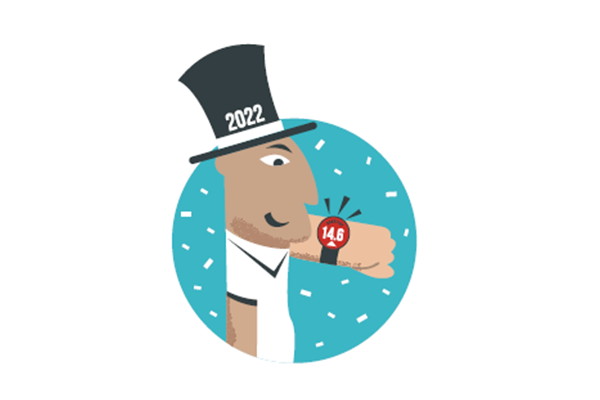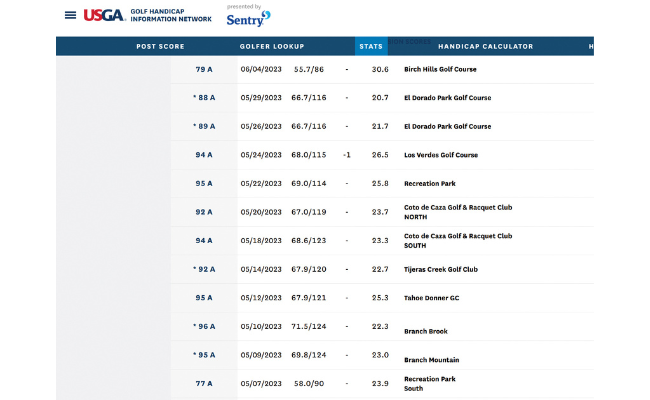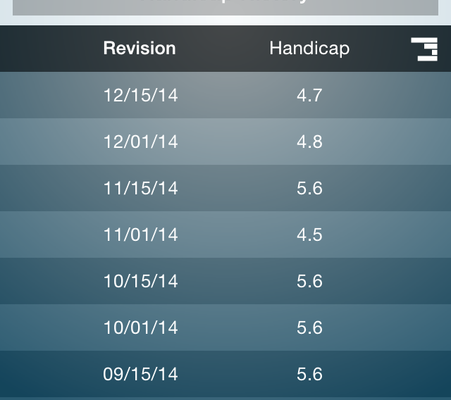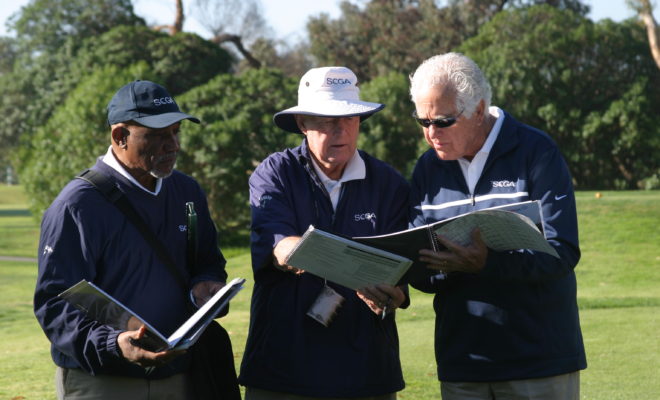New Year, New Handicap?

Sorry, not quite so fast
With the new year, many resolutions are made, including trying to improve our golf games (and our Handicap Index®). Unfortunately, “out with the old and in with the new” does not apply to your scoring record for handicap purposes.
First off, the definition of a scoring record for handicap purposes starts with a history of a player’s acceptable scores, along with the player’s current Handicap Index and the player’s Low Handicap Index™.
The word “history” is important. Scores made in 2021 don’t magically disappear. They are part of your history, and if they are part of your most recent 20 scores posted date-wise, they will be considered for the best eight of 20 calculation (based on Score Differential™).
In other words, if a player posts three scores early in 2022, it is likely that the calculation of a Handicap Index will start by picking the best eight from a composite of the three 2022 scores plus the 17 most recent 2021 scores.
History also plays a role in the Low Handicap Index. The Low Handicap Index is formally defined as: “The lowest Handicap Index achieved by a player during the 365-day period (one year) preceding the day on which the most recent score in their scoring record was played (see Rule 5.7).”
That might be a mouthful, but if today is January 25, 2022, the Handicap Index from January 25, 2021, might be the player’s Low Handicap Index. Again, historical Handicap Index values are not tossed out when the calendar changes to a new year.
Understanding this can be important in determining whether the cap portion of the formula discussed in the summer edition of FORE may apply, or if a committee is using the Low Handicap Index as a term of competition in an event.
A further clarification using date examples: If the most recent score posted is from January 23, 2022, and the Low Handicap Index from January 25, 2021, resulted in a cap being applied, and the next time a player ends up playing golf is March 2022, no revision of handicap will take place on January 25, 2022. The Low and “current” Handicap Index remain as they are until the March score is posted and the handicap is updated/revised.
No magical recalculation takes place solely because the one-year anniversary date of the Low Handicap Index passes. It is posting a score after that anniversary date that results in a new analysis for picking from eligible Handicap Index values in determining the Low Handicap Index.
One other topic that comes up this time of year is playing golf in different parts of the country (even the world) and understanding whether the score made is acceptable for handicap purposes.
We will focus on the U.S. for our example. Allied Golf Associations (like the SCGA) determine whether something called an inactive season for score-posting purposes in a region applies. This determination is made under the belief that conditions during a certain time of year aren’t likely to match those of mid-season conditions when golf courses in the region are regularly maintained in a consistent manner, so the difficulty of the courses are probably quite different and unlikely to match the issued Course Rating™ and Slope Rating™.
The system doesn’t want these different conditions to impact the Handicap Index. For example, scores made
in the state of Oregon are not acceptable for handicap purposes from December 1 through the end of February, as determined by the Oregon Golf Association (not the course). The state of Massachusetts has an inactive season from November 15 through the end of March.
These dates don’t mean you can’t play golf in this time window, but you cannot post a score for handicap purposes during those periods. When you use GHIN tools to try and post a score during these windows in regions observing an inactive season, a message will appear:
“Date played is outside the active score posting season for this golf course.”
You may be lucky enough to enjoy a January round at Bandon Dunes, but that score is not acceptable for handicap purposes.











